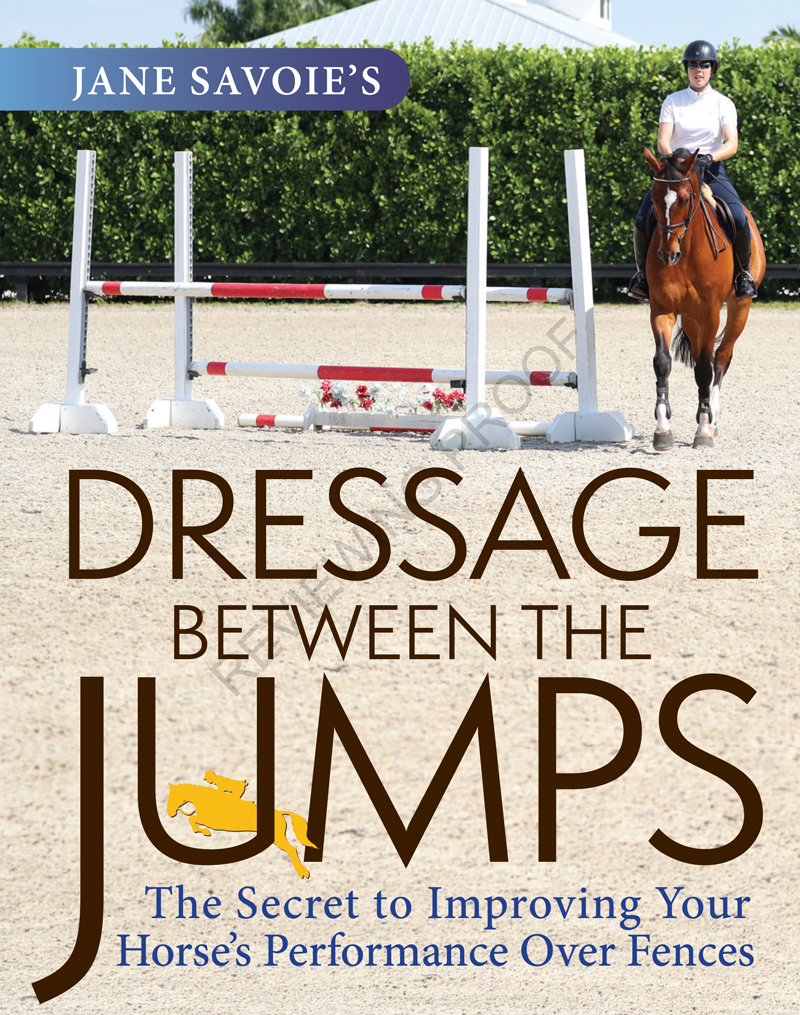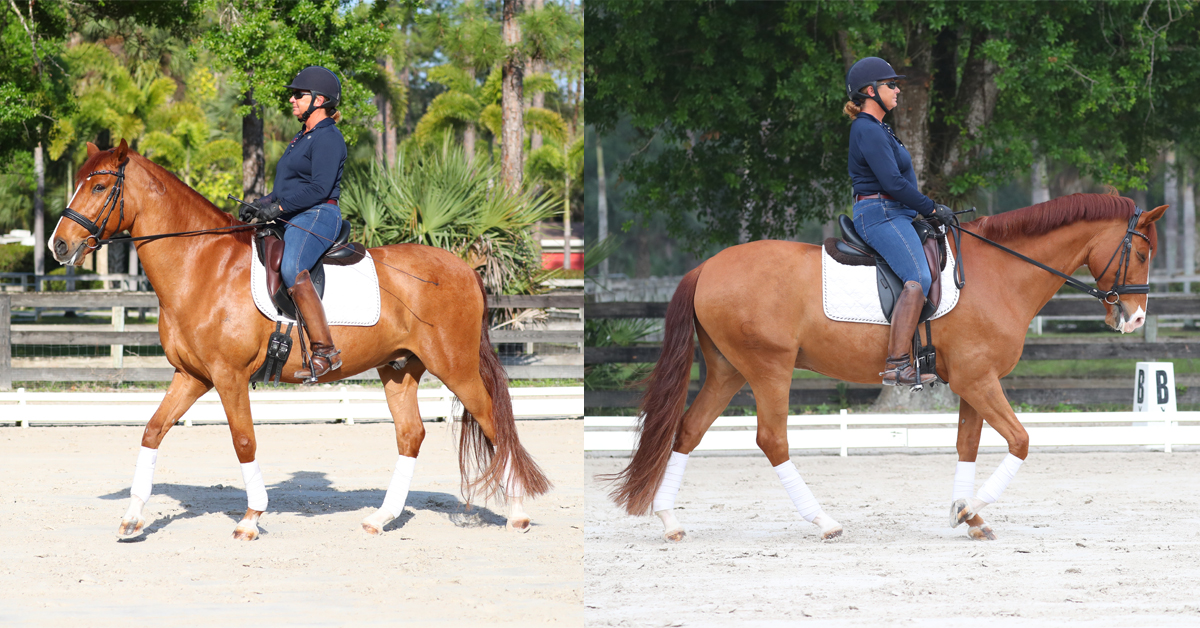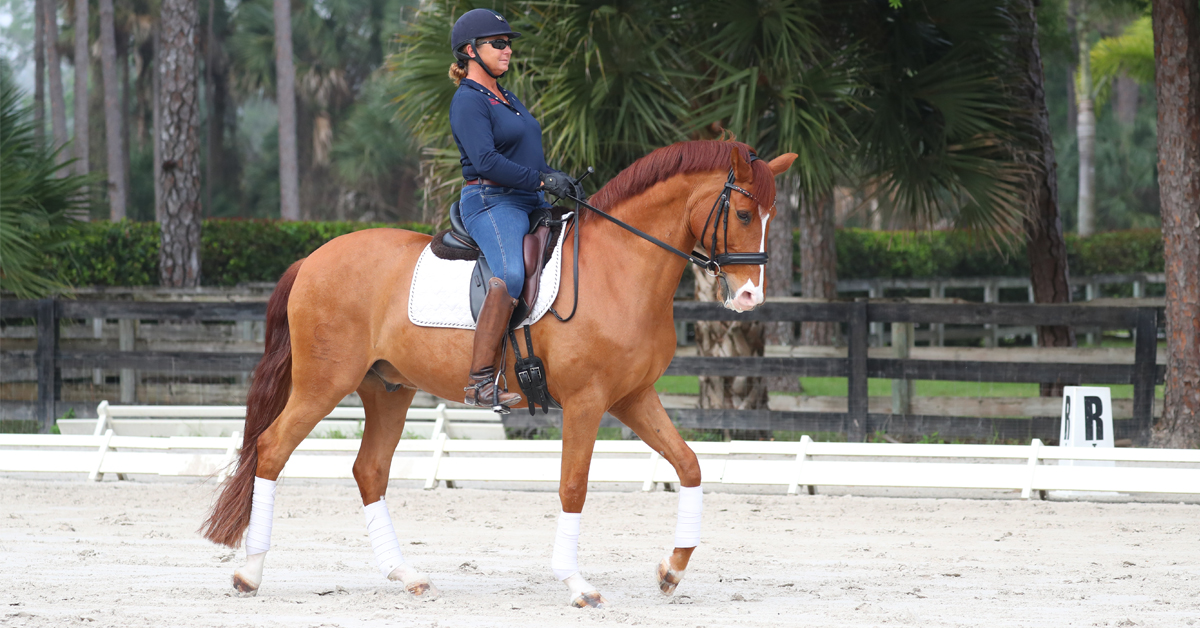
Working in a regular rhythm will not only make your dressage work more effective but will help you when you jump. That’s because once you have a regular rhythm and stride, you’ll develop an eye for seeing a distance to a jump. Then you can adjust the length of stride in that regular rhythm to suit the type of fence you’re jumping.
Improve the Quality of the Walk
Even though you do the majority of your jumping in the canter, you’ll do many of the exercises in this book in the walk and trot first. Doing so gives you time to learn how to coordinate the aids. It also gives your horse a chance to understand the exercise without dealing with the speed of the canter. Let’s have a look at what makes up high-quality gaits.
A stride of walk is made up of four steps. Starting with the outside hind, the sequence of legs in one walk stride is: outside hind, outside fore, inside hind, inside fore. The length of the space between each step should be the same.
In a good medium walk:
• The rhythm is regular.
• The horse over-tracks by stepping with his hind feet in front of the tracks made by the front feet.
• He has enough activity to easily propel him-self into an extended walk. You don’t have to “rev him up” first.
FEEL THE RHYTHM IN THE WALK
Here’s an exercise to help you feel a regular rhythm with equal spacing between each of the four steps.
1. At the walk in a fenced arena, close your eyes so you can tell when the horse’s outside hind foot is on the ground. When the out-side hind foot is on the ground, the horse’s outside hip is higher, so you’ll feel your out-side seat bone or hip either being raised or pushed forward. If it’s hard for you to feel it, ask a friend to watch you ride and call out, “One, one, one,” each time the outside hind foot is on the ground. Your ground person can either watch the foot or look at the hip and say ”one” during the moment when the hip is at the highest point. As she says “one,” notice how that point of the movement feels through your seat bone or hip. Every rider describes the feeling differently.
2. See if you can identify when the outside hind foot is on the ground without your ground-person’s help, but ask her to stay with you so she can confirm that you’re saying, “One,” when the outside hind is on the ground as opposed to being in the air. If you aren’t saying it when the outside hind foot is on the ground, have her count it again for you so you can identify the movement—and then try it on your own again.
3. Once you can identify the first step, add in the other feet as they come to the ground. The timing of your counting should sound like an even, “One, two, three, four; one, two, three, four; one, two, three, four.” This timing is a regular four-beat walk (see image above).
FIXING A LATERAL WALK OR PACE
If you hear something like, “One, two…three, four,” your horse’s rhythm isn’t regular. When the legs on the same side move too closely together, the walk is called “lateral.” If the rhythm degenerates further and the legs on the same side move together so you count only two beats in the walk, the horse is “pacing.”
Both a lateral walk and a pace are usually caused by tension and stiffness, especially in the back and neck. However, some horses are actually born with lateral walks. Horses with regular walks also can lose regularity. If your horse has a naturally big over-stride in his walk, it might get lateral if you collect the gait too soon in his training or if you restrict him with your hands. Be sure you have an “elastic elbow” that follows the horse’s head and neck forward and back so you don’t block him (figs. 3.2 A & B).

Maintain an elastic elbow that follows the movement of the horse’s neck and head forward and back. In photo A (left), the horse is restricted by the rider’s elbows. The legs on the same side almost move together so that his walk has become lateral. In photo B, the rider is following the horse’s neck forward and back with elastic elbows. As a result, the horse’s legs show four distinct beats. Because the horse doesn’t feel restricted by the rider’s hands, he can lengthen and lower his head and neck.

If your horse’s walk gets lateral, send his hindquarters a bit sideways to “break up” the diagonal pairs of legs.
If your horse’s walk gets lateral, send his hindquarters a bit sideways (fig. 3.3). You can leg-yield him in a little or out. If he has more education, do shoulder-fore or shoulder-in.
In all cases, these lateral exercises will break up the legs on the same side so the horse can take four even steps. A ground person can tell you when the walk is pure by noting when she can see the legs on the same side forming the letter “V.”
Next time: Improving the Quality of the Trot
*****
An excerpt from Dressage Between the Jumps: The Secret to Improving Your Horse’s Performance Over Fences by Jane Savoie. Published by Trafalgar Square Books / HorseandRiderBooks.com. Order your copy HERE.

